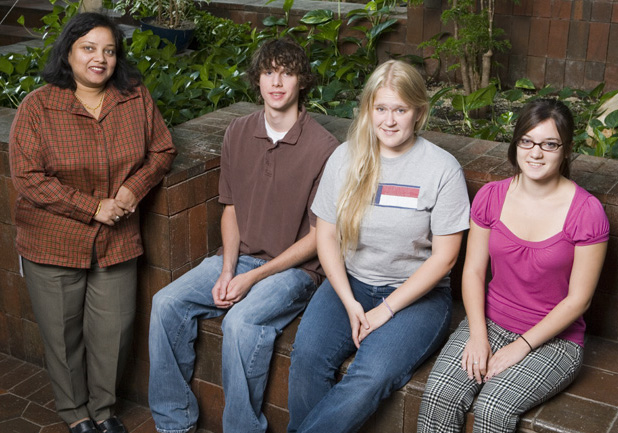 Started in 2006
Started in 2006 
 Started in 2006
Started in 2006 
Under the guidance of physics teacher Vandana Thakur, a team of four high school students spent seven weeks working with images from the Sloan Digital Sky Survey. The objects they were concerned with were interacting galaxies, which can be either colliding or merging. 44,250 images had to be inspected visually and classified as two galaxies, two stars, one star and one galaxy, one galaxy, or three or more galaxies. After the data had been examined a fifth and final time, there were only 20,349 true isolated galaxy pairs, about 46% of the original number. With the help of their mentor, Sahar Allam, the four students used the Java program TOPCAT to create graphs in order to analyze and visually represent their results. One of the most noteworthy diagrams is a 3D map which plotted about 4,500 of the merging galaxies in relation to earth by using spectroscopic redshift data from the SDSS.
